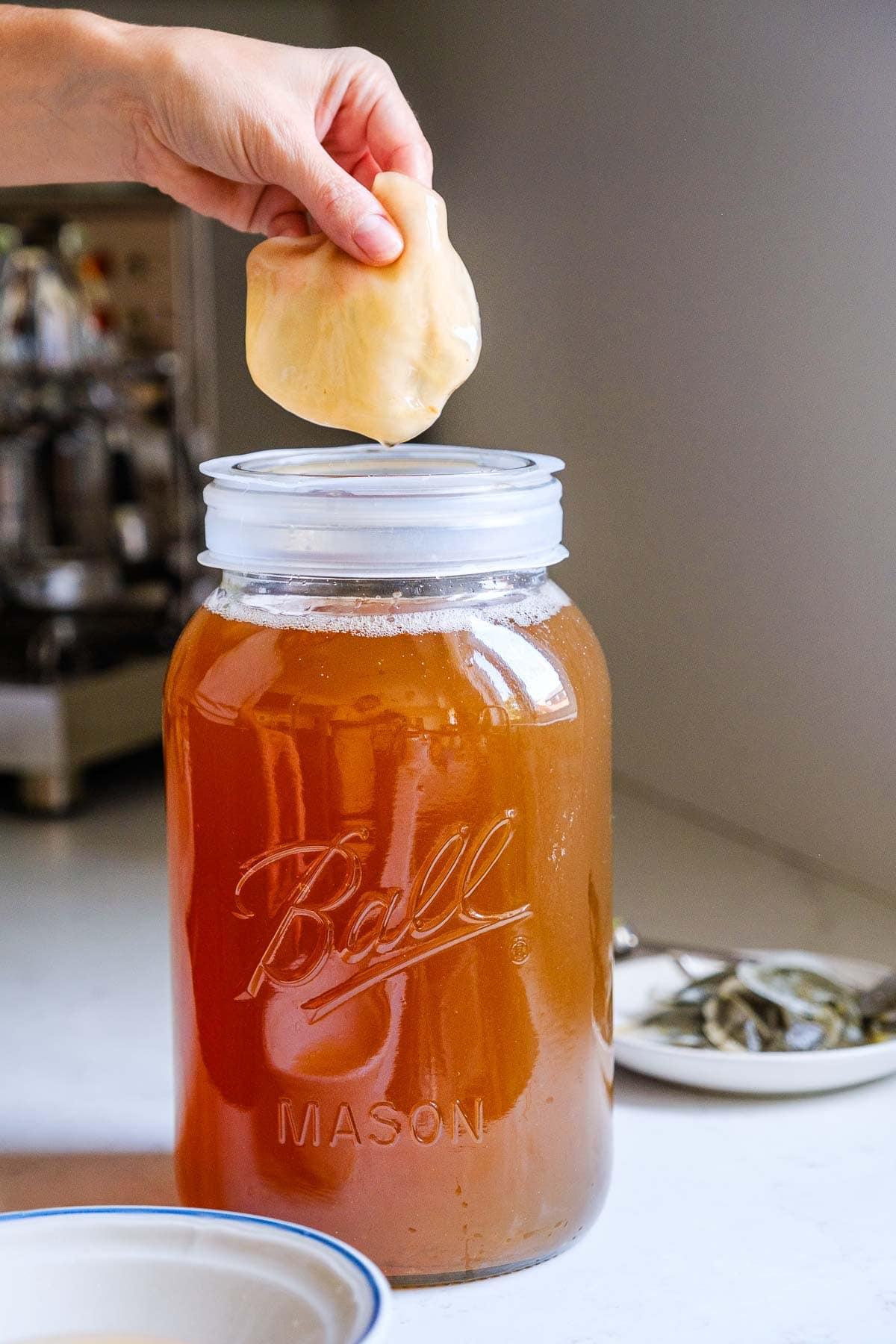Table of Contents
- Discovering the Unique Flavor Profile of Kombucha
- Unraveling the Mystery Behind Kombuchas Fizzy Sensation
- How Fermentation Shapes Kombuchas Distinctive Taste
- Exploring Flavor Variations in Different Kombucha Brands
- Tips for Acquiring a Taste for Kombucha
- Q&A
- Concluding Remarks


Discovering the Unique Flavor Profile of Kombucha
The journey into the world of kombucha begins with an intricate dance of flavors that can often intrigue and surprise the palate. A medley of sweet, sour, and tangy notes greets the taste buds, each element derived from the fermentation process that involves tea, sugar, and the magical SCOBY—a symbiotic culture of bacteria and yeast. This fermentation not only infuses kombucha with its distinctive zing but also alters its flavor depending on the type of tea used, ranging from green to black, and even herbal infusions. The slight natural carbonation adds a pleasing effervescence, reminiscent of a soft fizz, bringing an element of vitality to each sip.
Enthusiasts describe various flavor undertones that emerge uniquely in different batches, often shaped by fermentation time and the additional flavorings infused post-fermentation. You might detect fruity essences, such as apple or berries, or perhaps spicy hints like ginger and cinnamon. Others revel in its earthy and botanical qualities, sometimes likened to the complexity of a fine wine. As you explore different brands and homemade varieties, you will encounter an eclectic range, each boasting its own distinct character.
To better understand this flavor spectrum, consider these key influences on your kombucha experience:
- Tea Type: Green tea offers a lighter profile, while black tea provides robust depth.
- Fermentation Length: A shorter fermentation period results in a sweeter taste, while longer durations enhance sourness.
- Flavor Additions: Post-brew flavors like fruits and herbs can transform the drink into a refreshing delight.
| Attribute | Effect on Taste |
|---|---|
| Tea Type | Varies from light to bold |
| Fermentation Time | From sweet to sour |
| Added Ingredients | Enhances with fruity or spicy notes |
Unraveling the Mystery Behind Kombuchas Fizzy Sensation
The effervescent delight of kombucha isn’t just a random trait but a carefully orchestrated process that begins in its very jar of creation. This bubbly beverage owes its fizz to natural fermentation, a method that dates back centuries. During this process, a SCOBY—a symbiotic culture of bacteria and yeast—breaks down sugar into alcohol and carbon dioxide. It’s this carbon dioxide that gives kombucha its characteristic sparkle, transforming it from a simple tea into a tantalizing drink with a crisp finish.
Unlike sodas that employ artificial carbonation, kombucha’s fizz is a more complex affair, linked to the delicate balance of its fermentation environment. Key factors influencing this fermentation include:
- Temperature: Fermentation thrives in warm settings ranging between 68°F-78°F (20°C-25.5°C).
- Duration: Longer fermentation periods typically result in a tangier, more effervescent brew.
- Ingredients: The type of tea and sugar used can affect the levels of fermentation, thereby impacting fizz.
The vibrancy of kombucha is also affected by secondary fermentation—the stage where most of its signature bubbles form. When sealed in airtight containers after the initial fermentation, kombucha continues to produce carbon dioxide, intensifying its effervescent nature. This stage allows for creative experimentation with flavors by adding fruits, herbs, or spices. The added sugars from these flavorings feed the yeast further, bolstering the bubbly experience. In short, the fizzy sensation in every sip is a tribute to both art and science, harmoniously working to elevate this humble tea into a delightful sipping experience.


How Fermentation Shapes Kombuchas Distinctive Taste
The transformation of kombucha’s taste begins with a remarkable process involving the interplay of various microorganisms. During fermentation, a symbiotic culture of bacteria and yeast, commonly abbreviated as SCOBY, feeds on the sugars in the tea. This microbial orchestra produces a range of byproducts, including acetic acid, ethanol, and carbon dioxide, which collectively form the distinctive tang and fizz associated with this beloved beverage. Without this unique fermentation process, kombucha would lack its signature blend of tangy, sweet, and sour notes, each sip offering a testament to the natural wonders of fermentation.
Kombucha’s flavor profile is also influenced by the type of tea and additional flavorings used. Different teas, such as black, green, or oolong, contribute varied tannin levels and caffeine contents that affect the drink’s final taste. Some brewing enthusiasts elevate their batches with aromatic herbs, fresh fruits, or exotic spices. These choices allow for endless possibilities and customization, providing a personal touch to each brew. The resulting variety has made kombucha a canvas for culinary creativity, where bold and subtle flavors can harmonize in a single bottle.
Understanding how time plays a crucial role in fermentation reveals even more about kombucha’s signature taste. Fermentation Timeline Includes:
- Short Fermentation (7-10 days): Results in a milder, sweeter kombucha.
- Long Fermentation (14-30 days): Leads to a stronger, tangier, and more vinegar-like taste.


Exploring Flavor Variations in Different Kombucha Brands
When it comes to discovering new tastes, kombucha offers an unexpected adventure. Many brands on the market showcase a vast array of flavors, each as unique as the artisans who craft them. Common flavor bases like ginger, lemon, and berry provide a familiarity that draws in new tasters. However, the journey doesn’t end there. Many brewers take bold steps to incorporate exotic ingredients such as hibiscus, lavender, or even turmeric, offering a twist that tantalizes the taste buds.
- Fruity Infusions: Classic choices like apple, mango, and raspberry.
- Herbal Blends: Chamomile, rosemary, and mint offer a botanical burst.
- Spiced Variants: Cinnamon, cardamom, and pepper add a warming undertone.
Despite the shared ceremonial process of fermentation, each brand’s signature flavor is shaped by their unique brewing techniques and ingredient selection. Artisanal small-batch producers often emphasize their local ingredients, bringing a taste of the region to the global marketplace. The result can be dramatic, as seen in the comparison of the flavor profiles of popular brands:
| Brand | Flavor Signature |
|---|---|
| Bucha Bliss | Tropical Fruit & Spice |
| Harmony Brew | Citrus & Herbal Notes |
| Vitality Elixir | Berry & Floral Mélange |
Intrigue and curiosity often lead consumers to explore beyond their usual choices, driving brand innovation in crafting these diverse taste experiences. Sampling through various brands is akin to setting sail on an unexplored sea, with the promise of encountering something refreshingly new. While some prefer to stick with a single favored label, others relish the freedom to embrace variety and experimentation that the world of kombucha offers. As each brew unveils its individual character, one finds that the world of kombucha tastes is as limitless as one’s own palate.


Tips for Acquiring a Taste for Kombucha
One of the first steps in beginning to appreciate the unique flavors of kombucha is to start with milder varieties. Some brands offer options with softer, less vinegary undertones, which can be more palatable if you’re new to the beverage. These are often infused with fruity or floral notes that make for a sweeter introduction. Consider flavors like ginger, lemon, or berry blends that balance the tang with a gentle sweetness.
Another effective strategy is to pair kombucha with complementary foods. By combining it with snacks that balance its tartness, you can create an enjoyable contrast that enhances the experience. Here are some pairing ideas:
- Bold Cheeses: The creamy texture and rich flavors of cheeses like brie or gouda can beautifully offset the acidity of kombucha.
- Fresh Fruits: Try pairing with apples or pears to emphasize the fruity notes.
- Nuts and Seeds: Almonds or sunflower seeds add a delightful crunch that pairs well with kombucha’s effervescence.
For those who prefer to experiment, diluting kombucha can soften its robust profile. Mixing it with a splash of juice or adding it to a smoothie can dilute the flavor intensity while maintaining its probiotic benefits. Beginners might find this approach more approachable, gradually increasing the kombucha ratio as their palate adjusts. Using a simple mixer of choice can slowly introduce your taste buds to the more complex notes inherent to this fermented drink. Here’s a quick reference table to get started:
| Mixing Option | Suggested Ratio (Kombucha:Mixer) |
|---|---|
| Fruit Juice | 1:1 |
| Sparkling Water | 3:1 |
| Smoothie Base | 2:1 |
